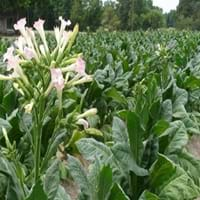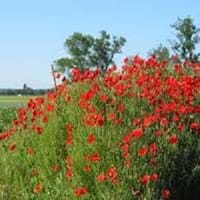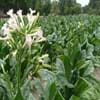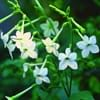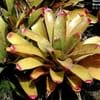Life Span
Annual and Perennial
Perennial
Type
Tender Perennial
Flowering Plants
Origin
Central America, South America
Europe
Types
Not Available
Not Available
Habitat
Cultivated Beds
gardens, Grassland, Tropical regions, Urban areas
USDA Hardiness Zone
10-11
5-8
AHS Heat Zone
Not Available
8-1
Sunset Zone
H1, H2, 8, 9, 18, 19, 20, 21, 22, 23, 24
1a, 1b, 2a, 2b, 3a, 3b, 4, 5, 6, 7, 8, 9, 14, 15, 16, 17
Habit
Upright/Erect
Clump-Forming
Flower Color
Light Pink
White, Yellow, Red, Orange, Light Yellow, Lemon yellow, Light Pink, Rose, Salmon, Coral, Peach
Flower Color Modifier
Bicolor
Bicolor
Fruit Color
Brown, Sandy Brown
Not Available
Leaf Color in Spring
Green
Gray Green
Leaf Color in Summer
Green, Dark Green
Gray Green
Leaf Color in Fall
Green, Dark Green
Gray Green
Leaf Color in Winter
Light Green
Not Available
Leaf Shape
Oblong elliptic
Bracts
Plant Season
Spring, Summer, Fall
Spring, Summer
Sunlight
Full Sun, Partial Sun
Full Sun
Type of Soil
Loam, Sand
Loam, Sand
The pH of Soil
Acidic, Neutral
Acidic, Neutral
Soil Drainage
Well drained
Well drained
Bloom Time
Early Summer, Summer
Late Spring, Early Summer, Summer
Tolerances
Drought
Not Available
Where to Plant?
Ground
Ground, Pot
How to Plant?
Seedlings
Seedlings, Transplanting
Plant Maintenance
Medium
Medium
Watering Requirements
Average Water Needs, Do Not over Water
Does not require lot of watering, Water occasionally
In Summer
Lots of watering
Lots of watering
In Spring
Moderate
Moderate
In Winter
Average Water
Average Water
Soil pH
Acidic, Neutral
Acidic, Neutral
Soil Type
Loam, Sand
Loam, Sand
Soil Drainage Capacity
Well drained
Well drained
Sun Exposure
Full Sun, Partial Sun
Full Sun
Pruning
Remove damaged leaves, Remove dead branches, Remove dead leaves
Remove damaged leaves, Remove dead branches, Remove dead leaves
Fertilizers
Equal amount of N,P,K
All-Purpose Liquid Fertilizer
Pests and Diseases
Aphids, Black Shank, Brown Spots, Collar Rot
Red blotch
Plant Tolerance
Drought
Drought
Flower Petal Number
Single
Single
Fragrant Bark/Stem
Yes
No
Foliage Texture
Coarse
Fine
Foliage Sheen
Matte
Matte
Attracts
Wildlife
Not Available
Allergy
Dermatitis
Skin irritation
Aesthetic Uses
Showy Purposes
Showy Purposes
Beauty Benefits
Not Available
Not Available
Environmental Uses
Air purification
Air purification
Medicinal Uses
Antispasmodic, Diuretic, Emetic, Expectorant, Homeopathy, Sedative
Used as a sedative
Part of Plant Used
Leaves, Seeds
Whole plant
Other Uses
Used as an insecticide, Used as insect repellent, Used to make cigarettes and cigars
Used as Ornamental plant
Used As Indoor Plant
No
Yes
Used As Outdoor Plant
Yes
Yes
Garden Design
Mixed Border
Alpine, Container, Cutflower, Mixed Border, Rock Garden / Wall, Wildflower
Botanical Name
NICOTIANA tabacum
PAPAVER alpinum
Common Name
Smoking Tobacco
Alpine Poppy
In Hindi
Smoking Tobacco
अल्पाइन पोस्ता
In German
Rauchtabak
Alpine Mohn
In French
Tabac fumeurs
Alpine Poppy
In Spanish
fumar tabaco
Alpine amapola
In Greek
Καπνός για κάπνισμα
Alpine παπαρούνας
In Portuguese
O fumo de tabaco
Alpine Poppy
In Polish
Palenie tytoniu
Alpine Poppy
In Latin
Quisque Tobacco
Alpini Poppy
Phylum
Magnoliophyta
Not Available
Class
Magnoliopsida
Dicotyledonae
Order
Solanales
Ranunculales
Family
Solanaceae
Papaveraceae
Clade
Asterids, Eudicots
Angiosperms, Eudicots
Tribe
Nicotianeae
Not Available
Subfamily
Nicotianoideae
Paperveroideae
Number of Species
Not Available
Not Available
Properties of Smoking Tobacco and Alpine Poppy
Wondering what are the properties of Smoking Tobacco and Alpine Poppy? We provide you with everything About Smoking Tobacco and Alpine Poppy. Smoking Tobacco doesn't have thorns and Alpine Poppy doesn't have thorns. Also Smoking Tobacco does not have fragrant flowers. Smoking Tobacco has allergic reactions like Dermatitis and Alpine Poppy has allergic reactions like Dermatitis. Compare all the properties and characteristics of these two plants. Find out which of these plant can be used as indoor plant. If you are interested to decorate your house and garden, find out aesthetic uses, compare them and select the plant which will beautify your surrounding. Along with beautification, try comparing medicinal and edible uses of Smoking Tobacco and Alpine Poppy and you can choose the plant having best and most benefits.
Season and Care of Smoking Tobacco and Alpine Poppy
Season and care of Smoking Tobacco and Alpine Poppy is important to know. While considering everything about Smoking Tobacco and Alpine Poppy Care, growing season is an essential factor. Smoking Tobacco season is Spring, Summer and Fall and Alpine Poppy season is Spring, Summer and Fall. The type of soil for Smoking Tobacco is Loam, Sand and for Alpine Poppy is Loam, Sand while the PH of soil for Smoking Tobacco is Acidic, Neutral and for Alpine Poppy is Acidic, Neutral.
Smoking Tobacco and Alpine Poppy Physical Information
Smoking Tobacco and Alpine Poppy physical information is very important for comparison. Smoking Tobacco height is 120.00 cm and width 40.60 cm whereas Alpine Poppy height is 10.20 cm and width 10.20 cm. The color specification of Smoking Tobacco and Alpine Poppy are as follows:
Smoking Tobacco flower color: Light Pink
Smoking Tobacco leaf color: Green
Alpine Poppy flower color: White, Yellow, Red, Orange, Light Yellow, Lemon yellow, Light Pink, Rose, Salmon, Coral and Peach
- Alpine Poppy leaf color: Gray Green
Care of Smoking Tobacco and Alpine Poppy
Care of Smoking Tobacco and Alpine Poppy include pruning, fertilizers, watering etc. Smoking Tobacco pruning is done Remove damaged leaves, Remove dead branches and Remove dead leaves and Alpine Poppy pruning is done Remove damaged leaves, Remove dead branches and Remove dead leaves. In summer Smoking Tobacco needs Lots of watering and in winter, it needs Average Water. Whereas, in summer Alpine Poppy needs Lots of watering and in winter, it needs Average Water.
